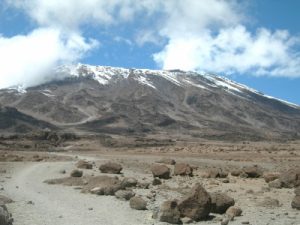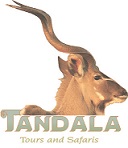 This is definitely the easiest and probably the most popular route for climbing Mount Kilimanjaro. It’s often called the Coca Cola Route because this is the only one where climbers can buy soft drinks and snacks at each stop on the way up. For what it’s worth, this route is also considered to be a bit of a joke by serious climbers, and in fact many of the more experienced operators don’t run trips up Marangu because it’s the least spectacular in scenery and it seems to attract the most people who aren’t really committed to doing it properly
This is definitely the easiest and probably the most popular route for climbing Mount Kilimanjaro. It’s often called the Coca Cola Route because this is the only one where climbers can buy soft drinks and snacks at each stop on the way up. For what it’s worth, this route is also considered to be a bit of a joke by serious climbers, and in fact many of the more experienced operators don’t run trips up Marangu because it’s the least spectacular in scenery and it seems to attract the most people who aren’t really committed to doing it properly
Day 1:
Pick up from Arusha town or Kilimanjaro International Airport and transfer to Moshi town, which is commonly known as the gateway to Mount Kilimanjaro at a Base Hotel in Moshi
Day 2:
After breakfast, you will have a short briefing on the climb. Depart to Marangu gate (45 minutes drive from Moshi to Marangu gate). Upon registering the authorities , officially start a four hour climb to the Mandara encampment (2,750m). Spend the night at Mandara Hut, an attractive collection of buildings. The huts have a bathroom with running water.
Day 3:
Ascent through the forest for a short time, before reaching the heather and moorland zone at roughly 3,000M (approximately a six-hour walk). Enjoy stunning views of the mountain peaks at this attitude. SPEnd the night at Horombo Hut (3,700M), which lies in a valley surrounded by giant lobelia and groundsel, flora which are charecterstic of this semi-alpine zone.
Day 4
This day continue with the trek past the final watering point, and ascend onto the saddle of Kilimanjaro, between the peaks of Kibo and Mawenzi. The vegetation thins out as you enter the desert-like alpine zone (approximately 4,000m) and, once you cross the saddle, kibo peak comes into view. The saddle is an alpine desert that resembles a lunar landscape. Be careful to notice signs of altitude sickness. This seven-hour walk will be taken at a slow pace. You will spend the night at Kibo Hut (4,703m), a comfortable stone construction. This semi-desert zone receives an annual rainfall of under 250mm; the ground often freezes at night, but ground temparatures soar to above 30 degrees Celsius by day. Few plants other than lichens and grasses survive in these conditions.
Day 5:
Shortly after midnight, you will commence the climb to the summit of Kilimanjaro, since it is easier to climb the scree slope to Gillman’s point (5,861m) on crater rim when it is frozen and an early start for the six-hour hike improves your chances of reaching the summit in time for sunrise. From Gilman’s Point, it is a further two-hour round trip along the crater’s edge to Uhuru peak, the highest point in Africa. From the summit, it is downhill all the way to Horombo Hut where you will spend your last night on the mountain
Day 6:
Today’s descent continues past the Mandara encampment to the bottom of the mountain, where each hiker will receive a well-earned certificate. From, here you will be transferred to the base hotel in Moshi for dinner and overnight.
Day 7:
After breakfast, transfer back to Arusha or Kilimanjaro International Airport.
End of the Climb.
The Safari Cost Includes:
– Transfers with pick up and drop off at Arusha or Airport
– Park entrance & rescues fees
– Accommodation and meals with 2 nights in a hotel as indicated in the itinerary
– Accommodation in tents with 2 persons per tent during climb
– Services of a cook to prepare meals during the climb
– Service of a mountain guide (English speaking) and porters
– Government taxes
The Safari Cost Excludes:
– Extras at the hotel i.e. drinks, telephone, laundry etc.
– International flight
– Departure tax
– Tips to guides, porters and drivers
– Climbing equipment and sleeping bags
What to bring:
A) Waterproof hiking boots,
B) Rain suit, sleeping bags,
C) Flashlights,
D) Sunglasses balaclava,
E) Hand gloves,
F) Night shoes
Note: The above rates are subject to availability of rooms at the time of booking
[wpforms id=”244″ title=”true” description=”true”]
